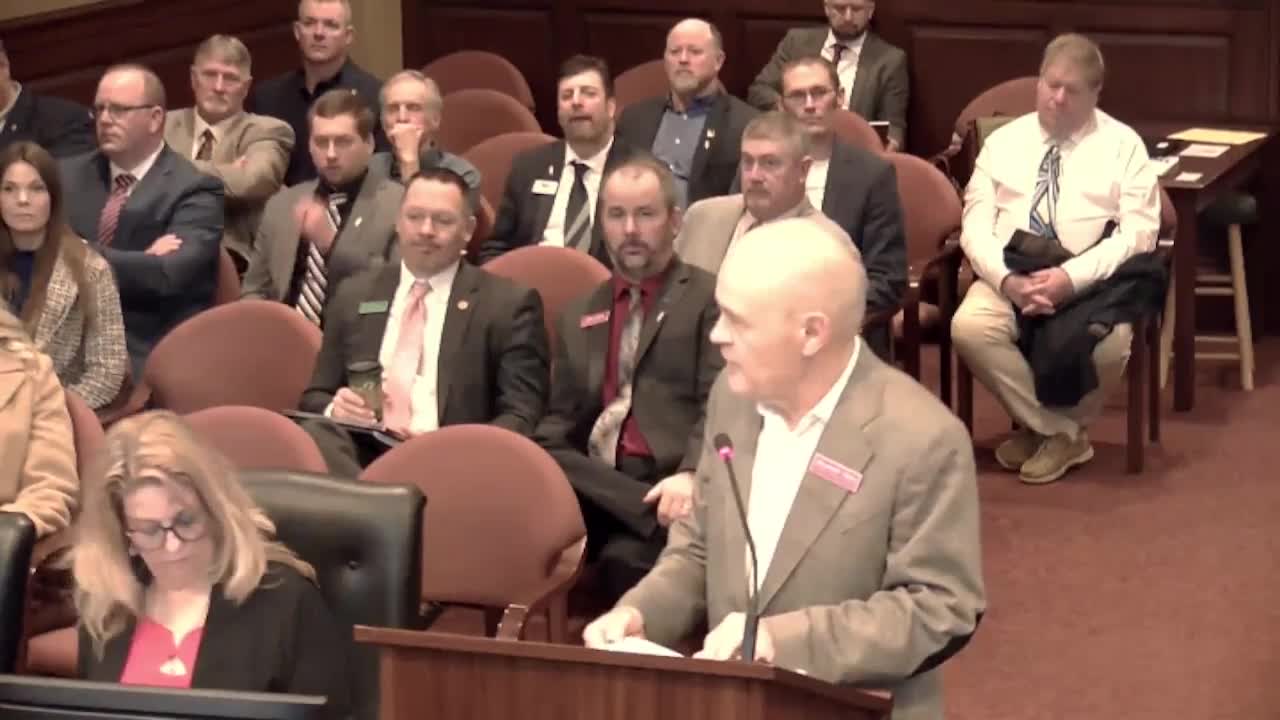Soil and Water Conservation Commission reports fiscal year 2024 results and program demand; administrator signals staffing and funding challenges
February 18, 2025 | Agricultural Affairs, SENATE, Committees, Legislative, Idaho
This article was created by AI summarizing key points discussed. AI makes mistakes, so for full details and context, please refer to the video of the full meeting. Please report any errors so we can fix them. Report an error »

Delwyn Trefts, administrator of the Idaho State Soil and Water Conservation Commission, briefed the Senate Agricultural Affairs Committee on the agency’s fiscal year 2024 annual and performance report, detailing revenues and expenditures, program activity for CREP and state water-quality cost-share programs, and staffing and technical capacity concerns.
Trefts said total commission revenues for fiscal year 2024 came from the general fund, interest receipts and the RCRDP loan fund and totaled approximately $3,950,000, while expenditures — including personnel, operating costs, trustee and benefit payments and loan disbursements — totaled just over $7,900,000. He described the commission’s four core functions as district support and services, comprehensive nonregulatory conservation programs, agency administration and outreach.
On program outcomes, Trefts reported commission staff provided technical support for about 49,705 acres enrolled in the Conservation Reserve Enhancement Program (CREP). The Resource Conservation and Rangeland Development Program (RCRDP) supported conservation projects on 8,221 privately owned acres in fiscal year 2024, and commission-supported best management practices were applied on 63,075 acres to maintain or improve groundwater quality.
Trefts emphasized strong demand for the state water-quality cost-share program referenced in the meeting as WACPA (the commission used variable spellings in the transcript). He said state appropriations have been reinvigorated since 2022: during the 2022–2024 period, $10 million in state funds were appropriated to the program; in fiscal year 2024 a $5 million appropriation supported projects submitted by conservation districts. For FY2024, Trefts reported 80 project proposals from districts and 50 projects selected for funding; he said the state funds were combined with landowner and other dollars to produce $17.7 million in total project value, representing roughly $3.54 in conservation per $1 of state investment in that fiscal year.
Trefts also noted the commission distributes base funding to conservation districts: $725,000 was distributed equally among 50 districts at $14,500 each, and remaining match funds were allocated proportionately under IDAPA 60.05.01 rules. He said the median match allocation to districts in fiscal 2024 was $13,834 and that the state match-to-local-support ratio was 1.49 to 1 — below the 2.12 to 1 maximum allowed under statute for match calculation.
Committee members asked about tracking of water savings from projects. Trefts said the commission has not historically tracked year-by-year water savings but that CREP staff are compiling water- and pollutant-load tracking and that the commission expects to have those metrics available in the following year. He also confirmed the commission is recruiting to fill a field-staff vacancy and said retaining skilled technical staff and securing funding for projects and engineering capacity are ongoing challenges.
The administrator thanked the committee for legislative support and closed by noting the commission’s reliance on voluntary, locally led conservation partnerships.
Trefts said total commission revenues for fiscal year 2024 came from the general fund, interest receipts and the RCRDP loan fund and totaled approximately $3,950,000, while expenditures — including personnel, operating costs, trustee and benefit payments and loan disbursements — totaled just over $7,900,000. He described the commission’s four core functions as district support and services, comprehensive nonregulatory conservation programs, agency administration and outreach.
On program outcomes, Trefts reported commission staff provided technical support for about 49,705 acres enrolled in the Conservation Reserve Enhancement Program (CREP). The Resource Conservation and Rangeland Development Program (RCRDP) supported conservation projects on 8,221 privately owned acres in fiscal year 2024, and commission-supported best management practices were applied on 63,075 acres to maintain or improve groundwater quality.
Trefts emphasized strong demand for the state water-quality cost-share program referenced in the meeting as WACPA (the commission used variable spellings in the transcript). He said state appropriations have been reinvigorated since 2022: during the 2022–2024 period, $10 million in state funds were appropriated to the program; in fiscal year 2024 a $5 million appropriation supported projects submitted by conservation districts. For FY2024, Trefts reported 80 project proposals from districts and 50 projects selected for funding; he said the state funds were combined with landowner and other dollars to produce $17.7 million in total project value, representing roughly $3.54 in conservation per $1 of state investment in that fiscal year.
Trefts also noted the commission distributes base funding to conservation districts: $725,000 was distributed equally among 50 districts at $14,500 each, and remaining match funds were allocated proportionately under IDAPA 60.05.01 rules. He said the median match allocation to districts in fiscal 2024 was $13,834 and that the state match-to-local-support ratio was 1.49 to 1 — below the 2.12 to 1 maximum allowed under statute for match calculation.
Committee members asked about tracking of water savings from projects. Trefts said the commission has not historically tracked year-by-year water savings but that CREP staff are compiling water- and pollutant-load tracking and that the commission expects to have those metrics available in the following year. He also confirmed the commission is recruiting to fill a field-staff vacancy and said retaining skilled technical staff and securing funding for projects and engineering capacity are ongoing challenges.
The administrator thanked the committee for legislative support and closed by noting the commission’s reliance on voluntary, locally led conservation partnerships.
View full meeting
This article is based on a recent meeting—watch the full video and explore the complete transcript for deeper insights into the discussion.
View full meeting